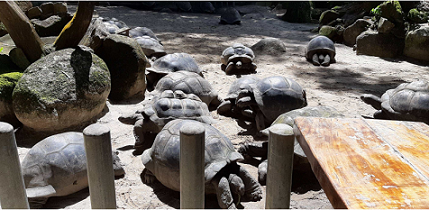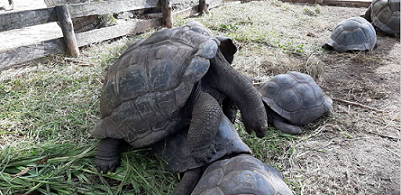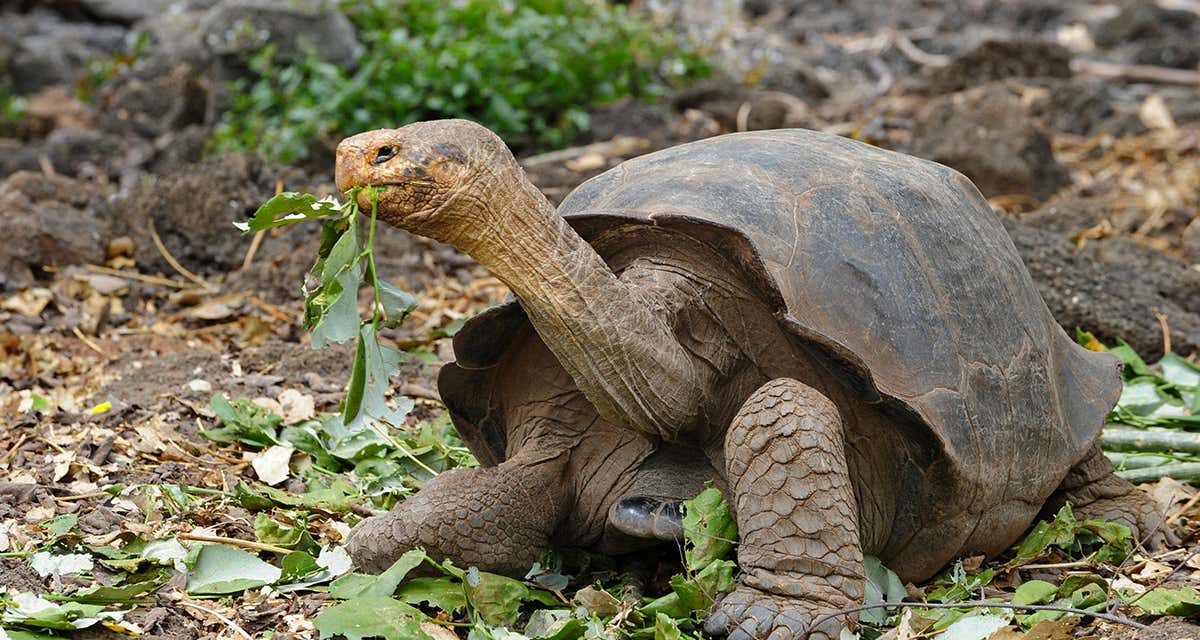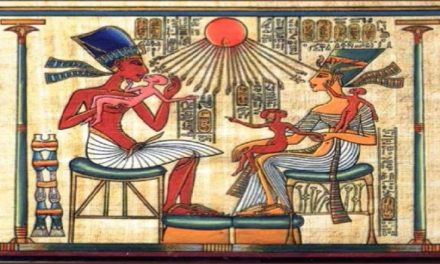
Galapagos tortoise -from google
Giant Tortoises van only be found in two remote places in the world today – the Aldabra Atoll and Fregate Island in Seychelles and the Galapagos Islands in Ecuador.
The Aldabra giant tortoise lives on the remote Aldabra Atoll one of the Seychelles group of islands in the Indian Occean. It is the only Indian Ocean giant tortoise species active today, others having become extinct soon after the arrival of human immigrants.

Aldabra giant tortoises in Mahe island, Seychelles (Photo credit Sohela Begum)
During the 1700s and 1800s, most of the Giant Tortoise species were pushed to extinction due to the over-population of European immigrants and introduction of predators like cats and dogs as well as goats which would demolish large quantities of vegetation before the slow-grazing giants could get to it. Assumed to have once occurred on all continents, except for Australia and Antarctica, the Giant Tortoise has now been reduced to a handful of populations. Luckily (and most likely due to its remoteness), the species on Aldabra Atoll remains and is now being protected as the whole of Aldabra has been declared a World Heritage Site.
These ancient creatures can weigh good over 400kg and grow to be roughly 1.3m in length. Giant tortoises have thick scales all over their limbs, neck and pointed head. Their limbs vary from dark grey to black in color. The thickness of their skin helps protect them from the sun, but their hard shell is still very important for protecting their soft endoskeletons.
The Galapagos Tortoise’s survival is partially due to their amazing adaptations. On certain islands with low hedging, the tortoises tend to have short legs and short necks, whereas on islands with taller vegetation (such as cacti), the tortoises have longer legs and necks. The neck of the Aldabra giant tortoise is very long, even for its great size, which helps the animal to exploit tree branches up to a meter from the ground as a food source.

Aldabra tortoises becoming mating, in Praslin island, Seychelles (Photo credit Sohela Begum)
These large, slow-moving creatures are herbivorous and can be marked grazing on the Island and using their long necks to break off leaves from greenery growing higher up. They have also been known to eat fruits and berries.
Some individuals have grown over 250 years old, but most live between 80 and 120 years. Due to their long lifecycle, they only reach sexual maturity at around 30 years. Once mated, the female will lay roughly 25 eggs in a dry, shallow next and maturation takes up to 8 months. All of this makes predation and chasing of the species a very real problem.
Be sure to keep an eye out for these gentle giants when exploring the Island!





